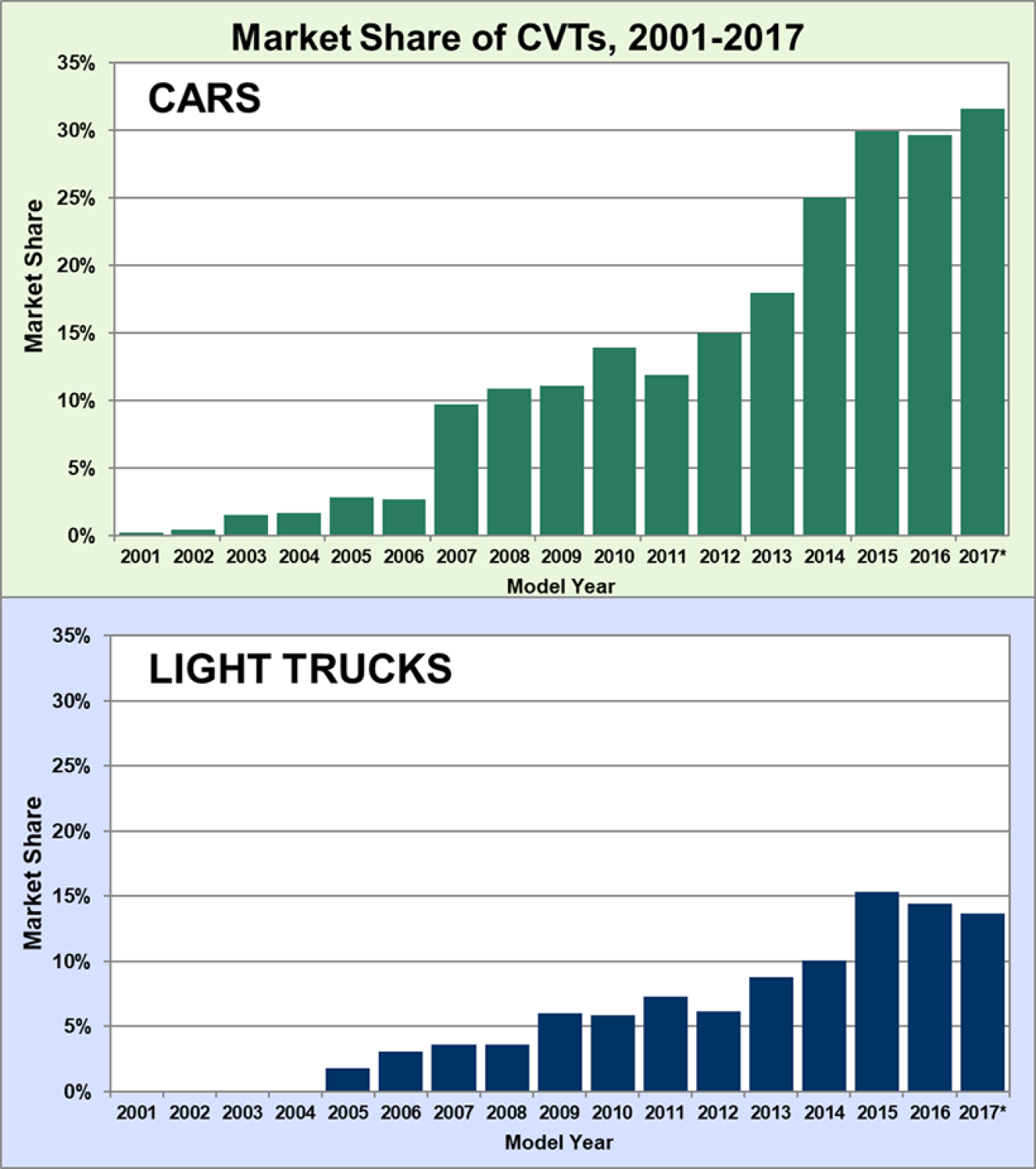Continuously variable transmission technology has been around for more than 15 years and by 2017, accounted for more than 30% of the new car market.
February 13, 2018Continuously variable transmissions (CVT) offer an infinite number of gear ratios that allow the engine to operate at peak efficiency throughout the entire range of vehicle speeds which improves fuel efficiency. Traditional transmissions have a fixed number of gears limiting peak fuel efficiency to fixed speeds within those gears. Today’s light vehicles typically have between five and ten gears. CVT technology has been around for more than 15 years and by 2017, accounted for more than 30% of the new car market and more than 10% of the new light truck market. Improved CVT technology and the need to meet stricter fuel economy standards has led to increases in CVT market share.

* Data for 2017 are preliminary, based on projected production data from the automakers.
Note: The definition of cars and light trucks is the same definition as in the Corporate Average Fuel Economy rulemaking. Thus, the car category includes cars, station wagons, and small 2-wheel drive sport utility vehicles (SUV). The light truck category includes pickups, vans, minivans, 4-wheel drive SUV, and large SUV.
Source: U.S. Environmental Protection Agency, Light-Duty Automotive Technology, Carbon Dioxide Emissions, and Fuel Economy Trends: 1975 Through 2017, EPA-420-R-18-001, January 2018.

